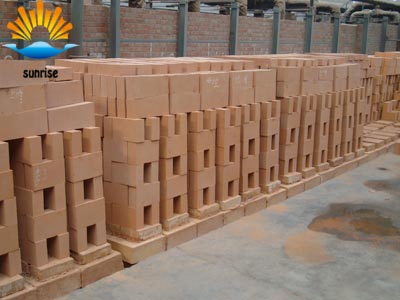Product
Fused Cast AZS Block
AZS Casting Type
AZS Ramming Materials
Fused Cast AZS TY-AZS41
Fused Cast AZS TY-AZS36
Fused Cast AZS TY-AZS33
Fused Cast Alumina Block
Fused cast Alumina Block TY-H
Fused cast Alumina Block TY-A
Fused cast Alumina Block TY-M
Fused Cast High Zirconia Block
Fused Cast Skid Rail Block
Silica brick
Magnesia Series Brick
Bonded Refractory Block
High alumina And Fire clay bricks
Insulation Series Brick
Ceramic Fiber Products
Contact Details
- 0086 371 63838939
- 0086 371 63835539
- sales@sunriserefr.com
- tkfanyi
- No.36 Fengchan Road, Zhengzhou City
Solutions
Refractory material drying and firing
- More related products
- Fused Cast AZS Block
- Fused Cast Alumina Block
- Fused Cast High Zirconia Block
- Fused Cast Skid Rail Block
First, the drying process
Billet drying is the removal of moisture contained in the brick process. The purpose of drying the green body is to improve its mechanical strength, is conducive to loading kiln operation and ensure that the early firing can proceed smoothly.
Refractory drying process is broadly divided into: drying of raw materials and molding of semi-finished products after drying. If the moisture content of soft clay exceeds 12%, it will be hard to crush if it is not dried, which will reduce the mill's production capacity. If the brick into the kiln water is too large, prone to cracking in the firing process; and dried semi-finished products, firing in the kiln is easier to control, not easy to produce waste; brick after drying mechanical strength is improved, is conducive to transport and loading kiln . After the preliminary drying of the semi-finished products have been stereotypes, may also be exposed during the molding process caused by defects such as cracks. After drying the brick, after the election and then fired kiln, will help improve the yield.
Drying process is divided into three stages. Before this there was a heating phase. The general heating phase is very short, the body temperature rose to the wet bulb temperature. The amount of water discharged from the body and the water in this phase did not change much.
The first stage is the most important stage of the drying process, this stage a lot of water Pai Shan, in the whole stage, the discharge rate is always constant, so said drying at constant speed. At this stage, moisture evaporation occurs only on the surface of the body, and the drying rate is equal to the evaporation rate of the free water surface. Therefore, any factors sufficient to affect the surface-evaporation rate may affect the drying rate. Therefore, in the isokinetic drying stage, the drying rate is independent of the thickness (or particle size) of the body and the initial water content, depending on the temperature, humidity and speed of the drying medium (air).
The second stage is the desiccation drying stage. With the extension of the drying time or the reduction of the water content of the body, the effective evaporation area of the body surface gradually decreases and the drying speed gradually decreases. At this point, the rate of moisture evaporation from the surface exceeds the rate of diffusion from the interior surface of the body, and therefore the drying rate is less affected by air temperature, humidity and speed of movement. The rate of moisture diffusion to the surface depends on the water content, the internal structure of the body (capillary conditions), the viscosity of the water and the nature of the material. In general, the non-plastic and weak plastic materials have strong internal diffusion. Coarse particles are stronger than fine particles, the higher the temperature of the water, the easier it is to diffuse.
The third stage of the drying rate gradually close to zero, the final body of water no longer reduce. When the air dry bulb temperature is less than 100 ℃, then retained in the body of water called the balance of water. This part of the water is solid particles are firmly adsorbed. The amount of water that is balanced depends on the nature of the material, the particle size and the temperature and relative humidity of the drying.
The apparent extent of the above three stages, depending on the amount of water in the body, generally plastic formability of the body, the three stages is more obvious, and the water is not semi-dry forming bad body, such as more Clinker brick, silica brick and magnesia brick, not obvious.
Equipment in the drying process are: tunnel dryer, drum dryer, vertical dryer, room dryer, dry kang, tunnel kiln before drying. There are also: far infrared drying, microwave drying, electric drying and so on.


Read more
Need more information? Drop us a line
For more information on any of our products please get in touch using the form below. One of our sales team will respond to your enquiry as soon as possible.
Copyright © 2014 Zhengzhou Sunrise Refractory Co., Ltd. Site Index Product IndexSitemap









